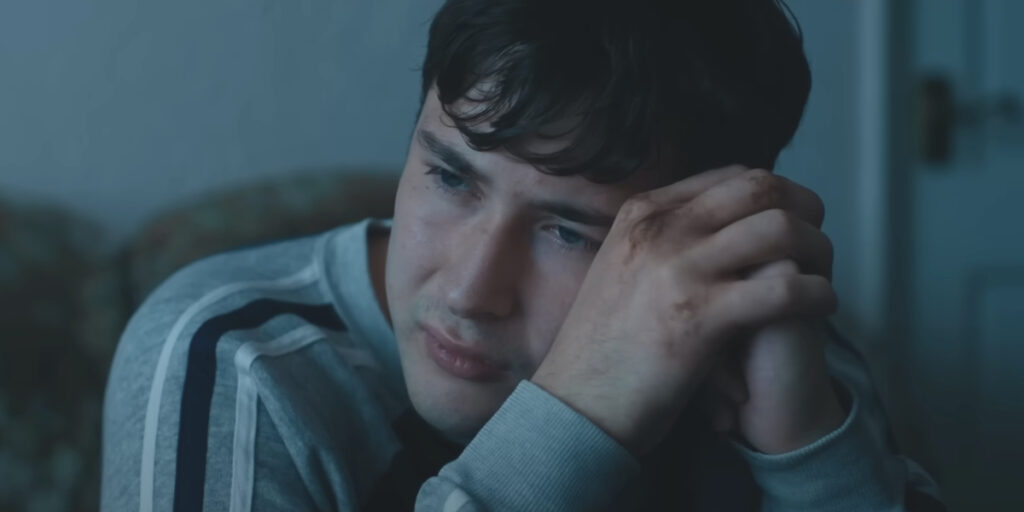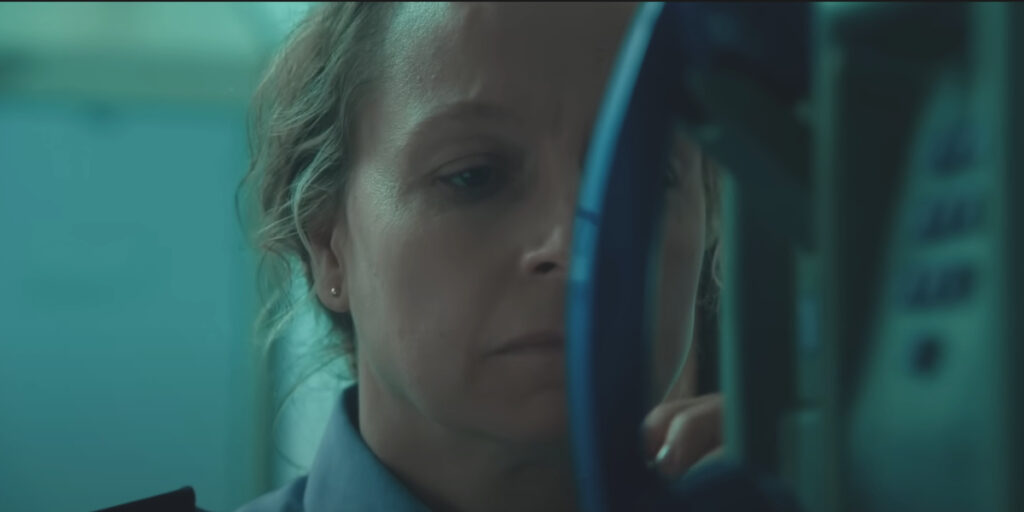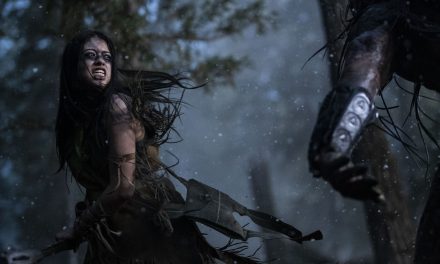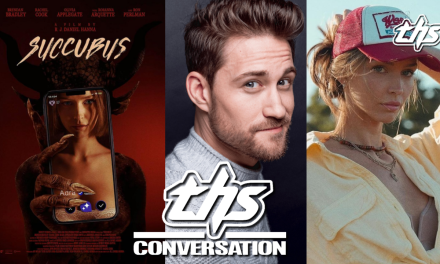Getting Daniel-Day Lewis to come out of retirement isn’t something anyone thought was possible. Then again, judging by how the actor has framed his previous announcement after 2018s’ Phantom Thread, he never meant to give anyone the impression that he’d officially called it quits. What cannot be argued is the fact that the 2025 fall movie Anemone was the project that brought the Academy Award-winner back to the fold, in the name of working with his son Ronan. While the much lauded actor does turn in yet another magnetic performance, what’s even more impressive is how his son – the co-writer and director of Anemone – delivers an artistic statement that’s both bold and unique.
Two stories make up the backbone of this drama: the reunion between brothers Ray (Daniel Day-Lewis) and Jim (Sean Bean), and the at-home turmoil unfolding between Nessa (Samantha Morton) and Brian (Ronan Day-Lewis). Anemone plays its cards close to the chest, slowly layering in the details about why these stories are connected. However, the end result may pleasantly surprise you with where it ends up heading.
Anemone’s Deceptively Simple Concept Plays Out In Multi-Faceted Beauty
Anemone feels like a perfect concept for a first-time director to tackle – which is partially thanks to it being co-written by Ronan and his father. The mostly compartmentalized narrative focuses on three people, at most, in any given moment. This isn’t to say that the concept is merely cinematic training wheels for a fledgling director like Ronan Day-Lewis, especially when the compelling story he co-authored actually uses its compartmentalization as an effective storytelling device.
The separation between Ray and Jim’s story from Nessa and Brian’s is on purpose, which gives Anemone the ability to spend extended stretches with a pair of characters on screen. Isolating these halves plays directly into the main conceit of the story – with Ray and Brian both being confronted for certain actions by loved ones who fear a disturbing pattern is taking shape.
Cinematographer Ben Fordesman’s visuals connect with the energy of Anemone’s performances on screen. Whether you’re watching stirring monologues or scenes of natural splendor, it never feels like the picture is resting in a lull – a feeling reinforced by moments of pure dread through both imagery and composer Bobby Krlic’s forceful score.

Ronan Day-Lewis’ Vision Rallies Around Its Quartet Of Brilliant Performances
Anemone’s mysterious story is well teased by its trailer, but the actual film itself operates in a different atmosphere than what you may expect. The intensity the marketing promises in Ray and Jim’s brotherly conflict is still present, but the reality of the finished product is much more multi-faceted – and almost genre-bending. If you’re looking for an accurate description of how to sum up this movie, I’d say it’s a young man’s story tackling an old man’s wounds.
“The Troubles” factor into the central story prominently, as Daniel Day-Lewis and Sean Bean’s characters are revealed to be British army vets with combat experience against the IRA. Those events inspire Ray to flee normal life, and his family, causing him fresh mental anguish by the time we meet up with him. This gives the There Will Be Blood actor a couple of scene-stealing monologues that deliver everything from humor to remorse, with some anger mixed in for good measure.
Daniel and Ronan Day-Lewis share this plot thread in a way, as Anemone sees its young protagonist at a similar crossroads in his life. The young triple threat is equally impressive in his plot line with Samantha Morton, who rounds out the main ensemble of top tier actors digging into the true pain of what Ray’s actions have set off.

Sociopolitical Commentary Meets Very Human Stakes In This Well-Played Family Narrative
Forgiveness is a huge key to the thematic content Anemone delivers; not only in how we forgive others, but also how we forgive ourselves. Opting for an approach that’s as quiet as it is methodical, some may be mistaken for considering it a slog – again, especially when compared to the trailer. I would substitute that notion with a statement that Anemone’s conflicts were boiled down to a trailer that’s effective at bringing people in the door, with the audience’s flexibility in defying expectations being the true measure of enjoyment.
Personally, I think Ronan Day-Lewis’ tale exploring redemption and the ties of family couldn’t have come at a better time. In a world where division has made headlines in many ways, Anemone keenly delves into the subject without merely operating as another awards bait melodrama. The visual methodology alone rebukes that formula, as some sequences use metaphors and images that border more on the metaphysical.
I wouldn’t be surprised if Ronan Day-Lewis steps into horror after this project, thanks to some jump scare style moments that show us the state of Ray’s psyche. Anemone should be celebrated as a return to form for Daniel Day-Lewis, without question. That being said, we must also honor the solid work put in by Sean Bean and Samantha Morton, whose taciturn portraits of family in crisis nail the whole enterprise together. And above all else, we should be celebrating the arrival of a sharp new voice in film-making, through a picture that makes us question ourselves through laughter, screams, and regret – just as everyday life asks of us.
For more Reviews, make sure to check back to That Hashtag Show.

![Anemone Review: Ronan Day Lewis’ Directorial Debut Is A Startling Slow Burn [NYFF 2025]](http://18.211.146.234/wp-content/uploads/2025/09/Anemone-Review-1280x640.png)



